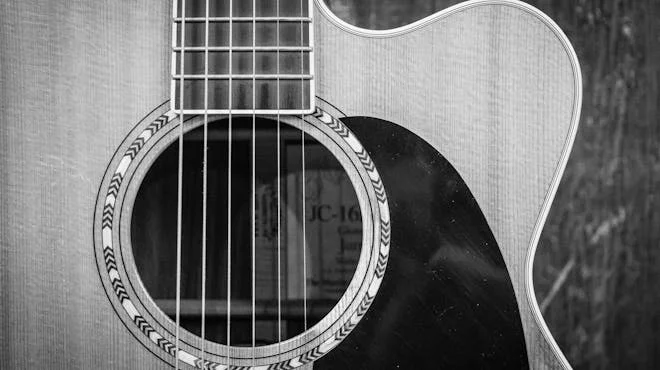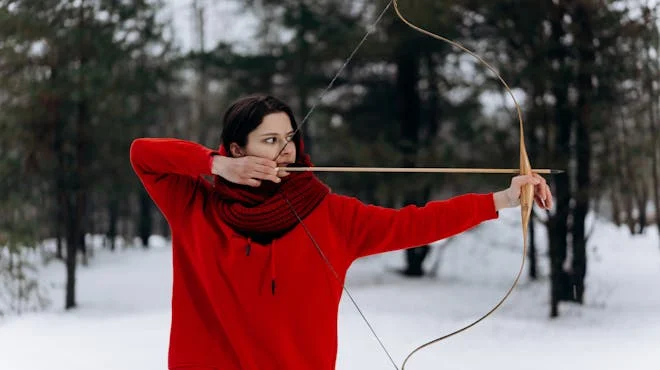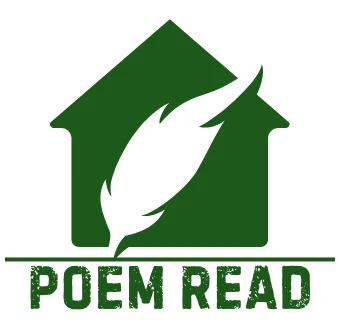
Hey there! Ever wondered about the stories behind those classic poems you studied in literature class? Today, we’re looking into one of Henry Wadsworth Longfellow’s timeless pieces, “The Arrow and the Song.” This poem packs a punch with its deep themes and beautiful imagery. So, let’s unravel the hidden meaning behind these simple yet profound verses!
The Arrow and the Song
by Henry Wadsworth Longfellow
I shot an arrow into the air,
It fell to earth, I knew not where;
For, so swiftly it flew, the sight
Could not follow it in its flight.
I breathed a song into the air,
It fell to earth, I knew not where;
For who has sight so keen and strong,
That it can follow the flight of song?
Long, long afterward, in an oak
I found the arrow, still unbroke;
And the song, from beginning to end,
I found again in the heart of a friend.
Content
The Subject of The Arrow and the Song- What is the Poem About?
The subject of “The Arrow and the Song” revolves around the impact of our words and actions. The poem metaphorically explores how our expressions, much like an arrow shot into the air, continue to exist and resonate even after they have left us. In addition, the poem features the metaphorical elements of an arrow and a song, symbolizing human expression and communication.
It is written by Henry Wadsworth Longfellow in the mid-19th century. This was a period marked by significant social and cultural change in America. During a time of rapid industrialization and societal complexities, Longfellow’s poetry serves as a reflection on the nature of human existence.
Who is the narrator of The Arrow and the Song?
The persona or narrator of the poem is not explicitly defined, allowing readers to interpret the verses from their own perspective. However, the narrator can be seen as an observer reflecting on the nature of existence.
Moreover, the narrative of the poem is third person. This allows for a broader exploration of the themes and ideas presented. This narrative style provides a sense of universality, inviting readers to engage with the poem on a personal level while also considering its broader implications.
Line-by-line Analysis of The Arrow and the Song
“I shot an arrow into the air,”
The opening line of “The Arrow and the Song” immediately grabs the reader’s attention. The use of vivid imagery and action-packed verb “shot” creates the setting of the poem. This line employs the literary device of metaphor, as the arrow represents the speaker’s words or actions.
It implies how sharp the words are, when shot into the air, just like an arrow. In addition, once an arrow is shot, this action cannot be reversed. As such, words said cannot be taken back. Through this metaphor, Longfellow introduces the central theme of the poem: the enduring impact of our expressions on the world.
“It fell to earth, I knew not where;”
In this line, Longfellow employs irony, as the speaker acknowledges the uncertainty of where the arrow will land. This uncertainty mirrors the unpredictability of the consequences of our words and actions. Not knowing where the arrow landed infers that our words can hurt or influence a somebody despite our awareness.
The use of litotes, or understatement, in the phrase “I knew not where” emphasizes the speaker’s lack of control over the outcome. This further emphasizes the theme of uncertainty and the unpredictable nature of life.

“For, so swiftly it flew, the sight”
Longfellow employs personification in this line, attributing human-like qualities to the arrow by suggesting that it has the ability to “fly.” This personification adds to the sense of movement and action in the poem. Furthermore, as the arrow soars through the air, it takes only seconds to speak words out of our mouth.
The poet has employed alliteration with the repeated “s” sounds in “so swiftly” and “sight”. It creates a sense of fluidity and speed, reinforcing the rapid movement of the arrow.
“Could not follow it in its flight.”
Here, Longfellow highlights the inability to track or trace the arrow’s flight path. It prompts readers to consider the limitations of human perception and understanding. This statement also underscores the theme of mysterious nature of life and human actions. It can also be considered as a sarcasm over the human nature of acting without being aware of the circumstances.
Additionally, the alliteration of the “f” sound in “follow” and “flight” adds to the poem’s musicality and rhythm.
“I breathed a song into the air,”
The second stanza starts with a metaphorical statement. Here, the speaker compares the act of singing or creating music to the act of breathing. He could be referring to an artist expressing his thoughts and emotions into the world through music.
This line also employs personification, attributing human-like qualities to the “song”. It suggests that a song is something tangible that can be breathed out into the air. This personification adds depth to the poem. It implies that the song has a life of its own, separate from the singer. Furthermore, it suggests that unlike physical objects that can be seen and touched, music exists in the air, transient and ever-changing. In the context of the poem, this can be an understatement of how much music can influence people.
“It fell to earth, I knew not where;”
Similar to the earlier lines, Longfellow employs irony and litotes to convey the uncertainty of the song’s destination. The repetition of this phrase stresses the on the unpredictable outcomes of both words as well as music.
“For who has sight so keen and strong,”
Here, Longfellow employs a rhetorical question to again emphasize the limitations of human perception. The speaker suggests that even the most perceptive individuals are unable to fully comprehend the consequences of their actions. Thus, this rhetorical question invites readers to consider the complexity of the human nature. It gives a sense of acceptance on the nature of human qualities.
“That it can follow the flight of song?”
In this final line, Longfellow poses another rhetorical question, challenging readers to contemplate on where the song lands. The use of enjambment, or the continuation of a sentence from one line to the next, creates a momentum and flow. Here, the hidden meaning could also be implying that not all individuals have the intellect to understand the deeper meanings in music and songs.
“Long, long afterward, in an oak”
In the third stanza, Longfellow introduces a temporal shift, indicating that some time has passed since the previous events. The repetition of the word “long” emphasizes the passage of time since the initial actions of shooting the arrow and singing the song. This temporal shift adds depth to the poem, suggesting that the consequences of our words and actions lasts for years.
“I found the arrow, still unbroke;”
The word “found” infers discovering something that was lost. It points out to the previous lines where the destination of arrow not immediately apparent but was revealed over time.
Here, Longfellow employs imagery to convey the durability and resilience of the arrow, which is discovered “still unbroke” in an oak tree. This image of the arrow embedded in the oak tree symbolizes the lasting impact of the speaker’s actions, despite their initial uncertainty. The use of imagery adds a visual element to the poem, allowing readers to vividly imagine the scene of the arrow lodged in the tree.
“And the song, from beginning to end,”
Longfellow employs anaphora with the repetition of the phrase “And the song,” emphasizing the continuity and completeness of the song’s journey. This repetition reinforces the idea that the song, like the arrow, has endured over time and remains intact despite its intangible nature.
The term “beginning to end” points out to the full scope of the song, suggesting that it encompasses all its verses, melodies, and emotions from start to finish. Furthermore, it suggests that every note and lyric in a song contribute to the overall message and impact of the song.
“I found again in the heart of a friend.”
In this concluding line, the speaker discovers the song, not in a tangible form like the arrow in the oak tree, but rather in the heart of a friend.
This employs symbolism, as the heart of a friend represents a metaphorical bank where the song stayed. It suggests that the true impact words are found not in physical objects but deep within the heart. In addition, Longfellow emphasizes the ability of art to resonate deeply with others on an emotional level.
Furthermore, while the arrow may have been found physically intact in the oak tree, it is the song’s ability to touch the hearts that truly defines its lasting impact. Overall, the poem highlights the lasting impact of words and music, and their connection with human emotions.
Music and other creations inspired by The Arrow and the Song
“The Arrow and the Song” by Henry Wadsworth Longfellow has inspired various artistic interpretations across different mediums, including music and visual art.
In the world of music, composers have drawn inspiration from Longfellow’s poem to create musical compositions that capture the themes and emotions conveyed in the verses.
For more information, follow the links The Arrow and the Song – Cantaré Children’s Choir Calgary (youtube.com)
Additionally, artists and illustrators have been inspired to create visual interpretations of the poem, using imagery to capture the essence of Longfellow’s words.
Q and A
What are the themes and recurring ideas of The Arrow and the Song?
Legacy and Impact
One of the central themes of “The Arrow and the Song” is the concept of legacy and the lasting impact of our words and actions. The poem explores how our expressions, like arrows shot into the air, continue to exist and resonate, leaving a mark on the world even after they have left us.
Timelessness
Another recurring theme in the poem is the idea of timelessness. Longfellow suggests that the effects of our words and deeds transcend the limitations of time, influencing future generations.
What is the tone or the mood of The Arrow and the Song?
The tone of “The Arrow and the Song” by Henry Wadsworth Longfellow is contemplative and reflective. Throughout the poem, the narrator reflects on the impact of their actions and the legacy they leave behind. Furthermore, the tone is characterized by a quiet and thoughtful on these themes.
In addition, the mood of the poem is both melancholic and hopeful. There is a sense of melancholy in the realization that the arrow’s destination is unknown, and the song’s recipient is unseen. However, there is also a hopeful undertone in the idea that our actions and expressions continue to exist and resonate beyond our immediate perception.
What is the form and structure of The Arrow and the Song?
The form or structure of “The Arrow and the Song” by Henry Wadsworth Longfellow is concise and tightly structured. The poem consists of three stanzas, each comprising four lines. However, the stanzas are relatively short, contributing to the poem’s clarity.
There are pauses or line breaks at the end of each line, giving it a sense of rhythm. Furthermore, these breaks allow for a natural flow of the verses and emphasize the significance of each line.
Punctuations
In terms of punctuation, the poem features minimal punctuation, primarily using commas and periods to indicate pauses and endings. This approach enhances the poem’s simplicity and rhythmic flow, allowing the reader to focus on the imagery and themes presented.
Rhyme scheme and rhythm
The poem employs an AABB rhyme scheme, with the first and third lines of each stanza rhyming with each other, as do the second and fourth lines. This consistent rhyme scheme adds to the musicality of the poem and contributes to its overall aesthetic appeal. The poet likely selected this rhyme scheme to enhance the lyrical quality of the verses and reinforce the poem’s themes of continuity and harmony.

About the author- Henry Wadsworth Longfellow
Henry Wadsworth Longfellow, one of America’s most beloved poets, was born on February 27, 1807, in Portland, Maine. From a young age, Longfellow exhibited a keen interest in literature and language, displaying a remarkable aptitude for writing poetry. He attended Bowdoin College, where he developed friendships with future luminaries such as Nathaniel Hawthorne and Franklin Pierce, who would later become the 14th President of the United States.
After graduating from college, Longfellow embarked on a distinguished career in academia, becoming a professor of modern languages at Bowdoin College and later at Harvard University. He was particularly passionate about languages and translated numerous works from languages such as Spanish, Italian, and French into English. His deep appreciation for languages and literature greatly influenced his own poetic style.
Longfellow’s literary career flourished, and he gained widespread recognition for his poetry, which often explored themes of nature, history, and the human experience. His works, including “The Song of Hiawatha,” “Paul Revere’s Ride,” and “Evangeline,” captured the imagination of readers both in America and abroad, earning him international acclaim.
Beyond his literary achievements, Longfellow was known for his humanitarian efforts and advocacy for social causes such as abolitionism and education reform. He used his platform as a prominent writer to address pressing issues of his time, advocating for justice and equality through his poetry and public speeches.
Despite facing personal tragedies, including the death of his first wife and several of his children, Longfellow remained resilient, finding solace and inspiration in his craft. However, poetry continued to resonate with audiences long after his passing on March 24, 1882. Finally, he left an indelible mark on American literature and cementing his legacy as one of the country’s greatest poets.
To read more poem explorations at our site, please follow the link Blog – PoemRead
RELATED POSTS
View all



